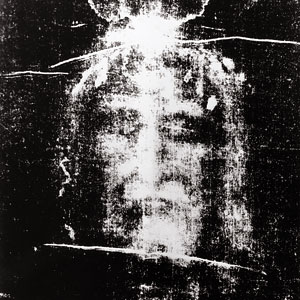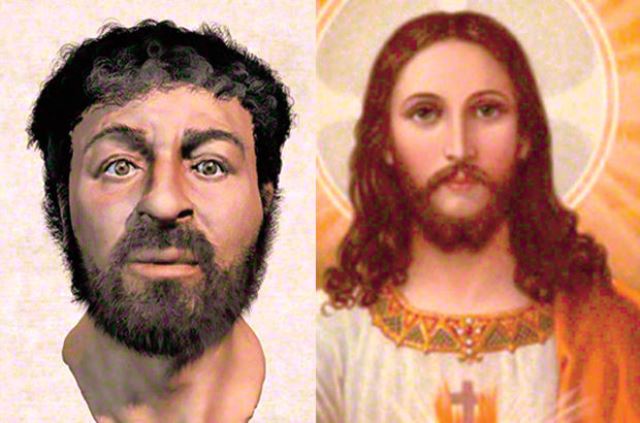An answer has emerged from an exciting new field of science: forensic anthropology. Using methods similar to those police have developed to solve crimes, British scientists, assisted by Israeli archeologists, have re-created what they believe is the most accurate image of the most famous face in human history.
The Changing Face of Jesus

The Body As Evidence
An outgrowth of physical anthropology, forensic anthropology uses cultural and archeological data as well as the physical and biological sciences to study different groups of people, explains A. Midori Albert, a professor who teaches forensic anthropology at the University of North Carolina at Wilmington. Experts in this highly specialized field require a working knowledge of genetics, and human growth and development. In their research they also draw from the fields of primatology, paleoanthropology (the study of primate and human evolution) and human osteology (the study of the skeleton). Even seemingly distant fields like nutrition, dentistry and climate adaptation play a role in this type of investigation.
While forensic anthropology is usually used to solve crimes, Richard Neave, a medical artist retired from The University of Manchester in England, realized it also could shed light on the appearance of Jesus. The co-author of Making Faces: Using Forensic And Archaeological Evidence, Neave had ventured in controversial areas before. Over the past two decades, he had reconstructed dozens of famous faces, including Philip II of Macedonia, the father of Alexander the Great, and King Midas of Phrygia. If anyone could create an accurate portrait of Jesus, it would be Neave.
Reconstructing Jesus
Matthew`s description of the events in Gethsemane offers an obvious clue to the face of Jesus. It is clear that his features were typical of Galilean Semites of his era. And so the first step for Neave and his research team was to acquire skulls from near Jerusalem, the region where Jesus lived and preached. Semite skulls of this type had previously been found by Israeli archeology experts, who shared them with Neave.
With three well-preserved specimens from the time of Jesus in hand, Neave used computerized tomography to create X-ray "slices" of the skulls, thus revealing minute details about each one`s structure. Special computer programs then evaluated reams of information about known measurements of the thickness of soft tissue at key areas on human faces. This made it possible to re-create the muscles and skin overlying a representative Semite skull.

The entire process was accomplished using software that verified the results with anthropological data. From this data, the researchers built a digital 3D reconstruction of the face. Next, they created a cast of the skull. Layers of clay matching the thickness of facial tissues specified by the computer program were then applied, along with simulated skin. The nose, lips and eyelids were then modeled to follow the shape determined by the underlying muscles.
A Matter Of Style
Two key factors could not be determined from the skull—Jesus`s hair and coloration. To fill in these parts of the picture, Neave`s team turned to drawings found at various archeological sites, dated to the first century. Drawn before the Bible was compiled, they held crucial clues that enabled the researchers to determine that Jesus had dark rather than light-colored eyes. They also pointed out that in keeping with Jewish tradition, he was bearded as well.
It was the Bible, however, that resolved the question of the length of Jesus`s hair. While most religious artists have put long hair on Christ, most biblical scholars believe that it was probably short with tight curls. This assumption, however, contradicted what many believe to be the most authentic depiction: the face seen in the image on the famous—some say infamous—Shroud of Turin. The shroud is believed by many to be the cloth in which Jesus`s body was wrapped after his death. Although there is a difference of opinion as to whether the shroud is genuine, it clearly depicts a figure with long hair. Those who criticize the shroud`s legitimacy point to 1 Corinthians, one of the many New Testament books the apostle Paul is credited with writing. In one chapter he mentions having seen Jesus—then later describes long hair on a man as disgraceful. Would Paul have written "If a man has long hair, it is a disgrace to him" if Jesus Christ had had long hair? For Neave and his team this settled the issue. Jesus, as drawings from the first century depict, would have had short hair, appropriate to men of the time.
The historic record also resolved the issue of Jesus`s height. From an analysis of skeletal remains, archeologists had firmly established that the average build of a Semite male at the time of Jesus was 5 ft. 1 in., with an average weight of about 110 pounds. Since Jesus worked outdoors as a carpenter until he was about 30 years old, it is reasonable to assume he was more muscular and physically fit than westernized portraits suggest. His face was probably weather-beaten, which would have made him appear older, as well.

Computer models (left) and modeling clay enable Neave (right) to create a forensically acceptable facial reconstruction. (Photographs by Keith Kasnot/National Geographic Image Collection [left] and The Unit of Art in Medicine/The University of Manchester, UK [right])
An Accurate Portrait
For those accustomed to traditional Sunday school portraits of Jesus, the sculpture of the dark and swarthy Middle Eastern man that emerges from Neave`s laboratory is a reminder of the roots of their faith. "The fact that he probably looked a great deal more like a darker-skinned Semite than westerners are used to seeing him pictured is a reminder of his universality," says Charles D. Hackett, director of Episcopal studies at the Candler School of Theology in Atlanta. "And [it is] a reminder of our tendency to sinfully appropriate him in the service of our cultural values."
Neave emphasizes that his re-creation is simply that of an adult man who lived in the same place and at the same time as Jesus. As might well be expected, not everyone agrees.
Forensic depictions are not an exact science, cautions Alison Galloway, professor of anthropology at the University of California in Santa Cruz. The details in a face follow the soft tissue above the muscle, and it is here where forensic artists differ widely in technique. Galloway points out that some artists pay more attention to the subtle differences in such details as the distance between the bottom of the nose and the mouth. And the most recognizable features of the face—the folds of the eyes, structure of the nose and shape of the mouth—are left to the artist. "In some cases the resemblance between the reconstruction and the actual individual can be uncanny," says Galloway. "But in others there may be more resemblance with the other work of the same artist." Despite this reservation, she reaches one conclusion that is inescapable to almost everyone who has ever seen Neave`s Jesus. "This is probably a lot closer to the truth than the work of many great masters."















































